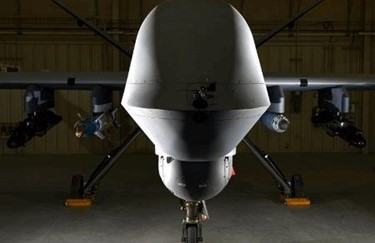Pentagon Developing Laser-Shooting Drones To Intercept Enemy Missiles
By Jof Enriquez,
Follow me on Twitter @jofenriq

The U.S. Missile Defense Agency (MDA) is proposing to spend $66 million on a program to develop and deploy unmanned aerial vehicles (UAV) that fire lasers at intercontinental ballistic missiles (ICBMs) shortly after takeoff, or during their boost phase of flight, when they are most vulnerable.
The $66 million budget request seeks to fund $61 million for the Low Power Laser Demonstrator (LPLD) Program, plus an additional $5 million to boost the laser’s power, said Missile Defense Agency Director of Operations Gary Pennett, according to Newsweek.
“Scalable, efficient, and compact high-energy lasers can be game-changing capabilities within missile defense architectures,” the MDA wrote in its budget proposal, which is about $2 billion greater than its 2018 request, the highest in the history of the agency. MDA's $9.9 billion budget request represents 0.22 percent of President Donald Trump’s $4.4 trillion 2019 budget proposal.
MDA cites the “recent escalation of the threat” from North Korea as a reason for boosting funding for missile defense.
Currently, the U.S. relies on its Ground-Based Midcourse Defense system to intercept enemy missiles that could strike the continental United States. The MDA is requesting $926.4 million to dig 20 more silos to add to an existing 40 to strengthen this last line of defense. These interceptors, however, are designed to shoot down missiles at the apex of flight, and have had a mixed record of success in tests.
North Korea newest and most powerful ICBM yet, the long-range Hwasong-15, could be more difficult to shoot down by existing interceptors. That's why, in addition to digging more silos, MDA's proposal calls for laser-firing drones that target ICBMs in their boost phase, when they are most vulnerable.
“If we can destroy the targets in their boost phase, then that will reduce the challenge of the mid-course phase significantly, because we’ll have destroyed the warhead and all the objects that might confuse our sensors long before their on their path to the homeland,” Richard Matlock, MDA’s advanced technology program executive, told Flight Global previously.
Last fall, the Defense Department contracted Lockheed Martin ($9.4 million), General Atomics (8.8 million), and Boeing ($8.9 million) to develop concepts for an airborne low-power laser demonstrator — ahead of flight tests in 2020 and a beam stability test planned for 2012, according to Flight Global.
Recent innovations in solid-state fiber lasers make them a more cost-effective solution to equip UAVs for an enhanced missile defense strategy.
“Unlike highly volatile chemical lasers or less powerful solid-state bulk lasers, solid-state fiber lasers use the same sort of fiber-optic technology that forms the backbone of the information economy. Adding more power has become a matter of just adding more fiber,” states Defense One.
The major branches of the U.S. military have been increasing funding and development of laser weapons in recent years. The latest is the U.S. Army's plan in the next five years to add 50-kilowatt lasers to its short-range air defense systems (SHORAD), a top priority for the Army to fill another perceived capability gap. The Army has already successfully demonstrated a 5-kilowatt laser on a Stryker combat vehicle — the Mobile Expeditionary High-Energy Laser (MEHEL), and will integrate a 60-kilowatt laser into its High Energy Laser Mobile Test Truck, reported Defense News.
